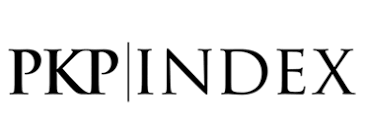Evasion of the Immune System by Mycobacterium tuberculosis: A Special Review on Macrophages
Abstract
Mycobacterium tuberculosis, the bacterium that caused tuberculosis, is estimated to affect 10 million people worldwide in 2019. This bacterium is an intracellular pathogen that is spread through the inhalation of bacterial aerosol particles. The innate immune system in the lungs is prepared to phagocytize these bacteria, particularly macrophages, dendritic cells, monocytes, and neutrophils. M. tuberculosis can evade attacks by the host immune system and has developed strategies to infect successfully, especially macrophages. This intracellular bacterium can inhibit phagolysosome fusion, which is associated with lipoarabinomannan (LAM) in the bacterial cell wall. M. tuberculosis also can persist in phagolysosomes by inhibiting acidification and also inhibiting the action of NOX2 from producing ROS. This ability also allows these bacteria to avoid autophagy within macrophages. Knowledge of the power of these bacteria to manipulate and evade the immune system, especially macrophages, is beneficial in developing medicines and vaccines in the future.
Keywords
Full Text:
PDFReferences
. World Health Organization. TUBERCULOSIS REPORTS. [Internet]. World Health Organization. Geneva; 2020 Dec. Available from: https://www.who.int/publications/i/item/9789240013131
. Sia JK, Georgieva M, Rengarajan J. Innate Immune Defenses in Human Tuberculosis: An Overview of the Interactions between Mycobacterium tuberculosis and Innate Immune Cells. J Immunol Res [Internet]. 2015;2015:1–12. Available from: http://www.hindawi.com/journals/jir/2015/747543/
. Ferraris D, Miggiano R, Rossi F, Rizzi M. Mycobacterium tuberculosis Molecular Determinants of Infection, Survival Strategies, and Vulnerable Targets. Pathogens [Internet]. 2018 Feb 1;7(1):1–17. Available from: https://www.mdpi.com/2076- 0817/7/1/17
. Sia JK, Rengarajan J. Immunology of mycobacterium tuberculosis infections. Gram-Positive Pathog. 2019;7(4):1056–86.
. Natarajan A, Beena PM, Devnikar A V., Mali S. A systemic review on tuberculosis. Indian J Tuberc [Internet]. 2020;67(3):295–311. Available from: https://doi.org/10.1016/j.ijtb.2020.02.005
. Kleinnijenhuis J, Oosting M, Joosten LAB, Netea MG, Van Crevel R. Innate Immune Recognition of Mycobacterium tuberculosis. Clin Dev Immunol [Internet]. 2011;2011:1– 12. Available from: http://www.hindawi.com/journals/jir/2011/405310/
. Kleinnijenhuis J, Oosting M, Joosten LAB, Netea MG, Van Crevel R. Innate Immune Recognition of Mycobacterium tuberculosis. Clin Dev Immunol [Internet]. 2011;2011:1– 12. Available from: http://www.hindawi.com/journals/jir/2011/405310/
. Vergne I, Chua J, Singh SB, Deretic V. Cell biology of Mycobacterium tuberculosis phagosome. Annu Rev Cell Dev Biol. 2004;20:367–94.
. Ferluga J, Yasmin H, Al-Ahdal MN, Bhakta S, Kishore U. Natural and trained innate immunity against Mycobacterium tuberculosis. Immunobiology [Internet]. 2020 May;225(3):151951. Available from: https://doi.org/10.1016/j.imbio.2020.151951
. Pai M, Behr MA, Dowdy D, Dheda K, Divangahi M, Boehme CC, et al. Tuberculosis. Nat Rev Dis Prim [Internet]. 2016 Dec 22;2(1):16076. Available from: http://www.nature.com/articles/nrdp201676
. Dey B, Dey RJ, Cheung LS, Pokkali S, Guo H, Lee JH, et al. A bacterial cyclic dinucleotide activates the cytosolic surveillance pathway and mediates innate resistance to tuberculosis. Nat Med [Internet]. 2015;21(4):401–8. Available from: http://dx.doi.org/10.1038/nm.3813
. Watson RO, Bell SL, MacDuff DA, Kimmey JM, Diner EJ, Olivas J, et al. The Cytosolic Sensor cGAS Detects Mycobacterium tuberculosis DNA to Induce Type I Interferons and Activate autophagy. Cell Host Microbe [Internet]. 2015;17(6):811–9. Available from: http://dx.doi.org/10.1016/j.chom.2015.05.004
. Manzanillo PS, Shiloh MU, Portnoy DA, Cox JS. Mycobacterium tuberculosis activates the DNA-dependent cytosolic surveillance pathway within macrophages. Cell Host Microbe [Internet]. 2012;11(5):469–80. Available from: http://dx.doi.org/10.1016/j.chom.2012.03.007
. Naeem MA, Ahmad W, Tyagi R, Akram Q, Younus M, Liu X. Stealth strategies of mycobacterium tuberculosis for immune evasion. Curr Issues Mol Biol. 2021;41(February):597–616.
. Philips JA, Ernst JD. Tuberculosis pathogenesis and immunity. Annu Rev Pathol Mech Dis. 2012;7:353–84.
. Lee HJ, Woo Y, Hahn TW, Jung YM, Jung YJ. Formation and maturation of the phagosome: A key mechanism in innate immunity against intracellular bacterial infection. Microorganisms. 2020;8(9):1–22.
. Quigley J, Hughitt VK, Velikovsky CA, Mariuzza RA, El-Sayed NM, Briken V. The cell wall lipid PDIM contributes to phagosomal escape and host cell exit of Mycobacterium tuberculosis. MBio. 2017;8(2):1–12.
. Tufariello JAM, Chapman JR, Kerantzas CA, Wong KW, Vilchèze C, Jones CM, et al. Separable roles for Mycobacterium tuberculosis ESX-3 effectors in iron acquisition and virulence. Proc Natl Acad Sci U S A. 2016;113(3):E348–57.
. Tinaztepe E, Wei JR, Raynowska J, Portal-Celhay C, Thompson V, Philipsa JA. Role of metal-dependent regulation of ESX-3 secretion in intracellular survival of Mycobacterium tuberculosis. Infect Immun. 2016;84(8):2255–63.
. Schnettger L, Rodgers A, Repnik U, Lai RP, Pei G, Verdoes M, et al. A Rab20-Dependent Membrane Trafficking Pathway Controls M. tuberculosis Replication by Regulating Phagosome Spaciousness and Integrity. Cell Host Microbe [Internet]. 2017;21(5):619- 628.e5. Available from: http://dx.doi.org/10.1016/j.chom.2017.04.004
. Conrad WH, Osman MM, Shanahan JK, Chu F, Takaki KK, Cameron J, et al. Mycobacterial ESX-1 secretion system mediates host cell lysis through bacterium contact-dependent gross membrane disruptions. Proc Natl Acad Sci U S A. 2017;114(6):1371–6.
. Levin R, Grinstein S, Canton J. The life cycle of phagosomes: formation, maturation, and resolution. Immunol Rev. 2016;273(1):156–79.
. Hmama Z, Peña-Díaz S, Joseph S, Av-Gay Y. Immunoevasion and immunosuppression of the macrophage by Mycobacterium tuberculosis. Immunol Rev. 2015;264(1):220–32.
. Collins AC, Cai H, Li T, Franco LH, Li XD, Nair VR, et al. Cyclic GMP-AMP Synthase Is an Innate Immune DNA Sensor for Mycobacterium tuberculosis. Cell Host Microbe [Internet]. 2015;17(6):820–8. Available from: http://dx.doi.org/10.1016/j.chom.2015.05.005
. Ouimet M, Koster S, Sakowski E, Ramkhelawon B, Van Solingen C, Oldebeken S, et al. Mycobacterium tuberculosis induces the MIR-33 locus to reprogram autophagy and host lipid metabolism. Nat Immunol. 2016;17(6):677–86.
DOI: https://doi.org/10.33854/heme.v6i2.1452
Refbacks
- There are currently no refbacks.
 Health and Medical Journal This work is licensed under a Creative Commons Attribution-NonCommercial-ShareAlike 4.0 International License.
Health and Medical Journal This work is licensed under a Creative Commons Attribution-NonCommercial-ShareAlike 4.0 International License.











